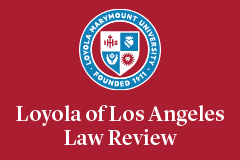Abstract
Across the United States, over 20,000 miles of land that formerly housed railroad corridors has been converted and reappropriated into public-use trails through a federal program aptly dubbed, “Rails-to-Trails.” The viability of the “Rails-to-Trails” program has been threatened by the Supreme Court’s decision in Martin M. Brandt Revocable Trust v. United States. In Brandt, the Court held that the underlying land in the “Rails-to-Trails” program constitutes an easement granted from the original private landowners to the railroad companies. Accordingly, once the railroad companies abandon the easement, the land reverts back to the original landowners, not the government. This Article analyzes the Brandt opinion and discusses the wide-ranging consequences of the Court’s holding. It begins by providing background on the original land conveyances in the eighteenth century that eventually gave rise to the current litigation in Brandt. It then proceeds to explain the Brandt decision and provide scholarly criticism of the Court’s opinion and reasoning. Finally, the Article concludes by discussing the practical implications of the decision: by holding that the underlying rail corridors are easements that revert to private landowners, the Court opens the door for these private landowners to bring Fifth Amendment Takings claims against the government for converting the rail corridors into public-use trails. Ultimately, this may require the taxpaying public to compensate the private landowners impacted by the “Rails-to-Trails” program.
Recommended Citation
Shelley Ross Saxer,
"Rails-to-Trails" Potential Impact of Marvin M. Brandt Revocable Trust v. United States,
48 Loy. L.A. L. Rev. 345
(2015).
Available at: https://digitalcommons.lmu.edu/llr/vol48/iss2/4


